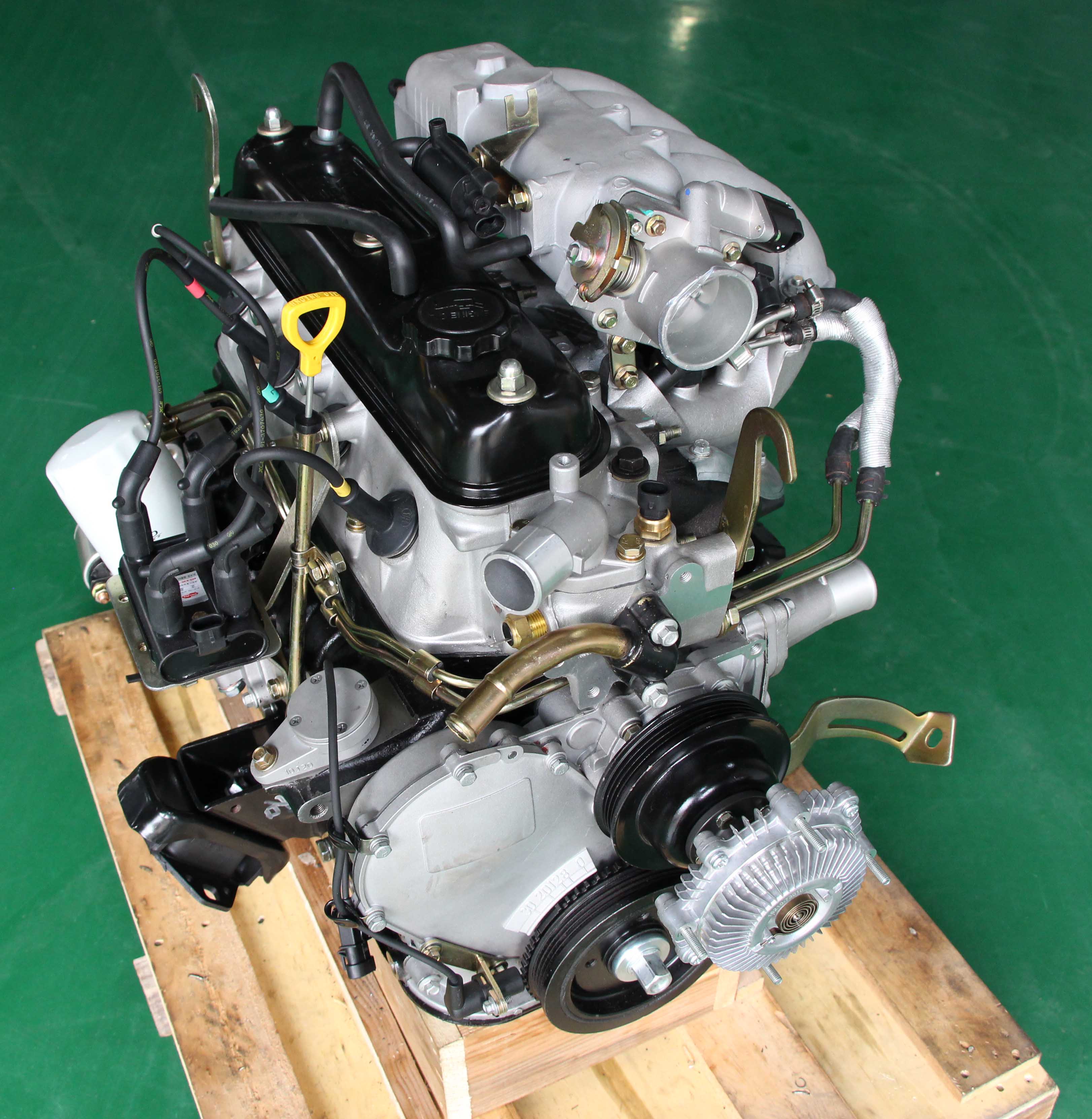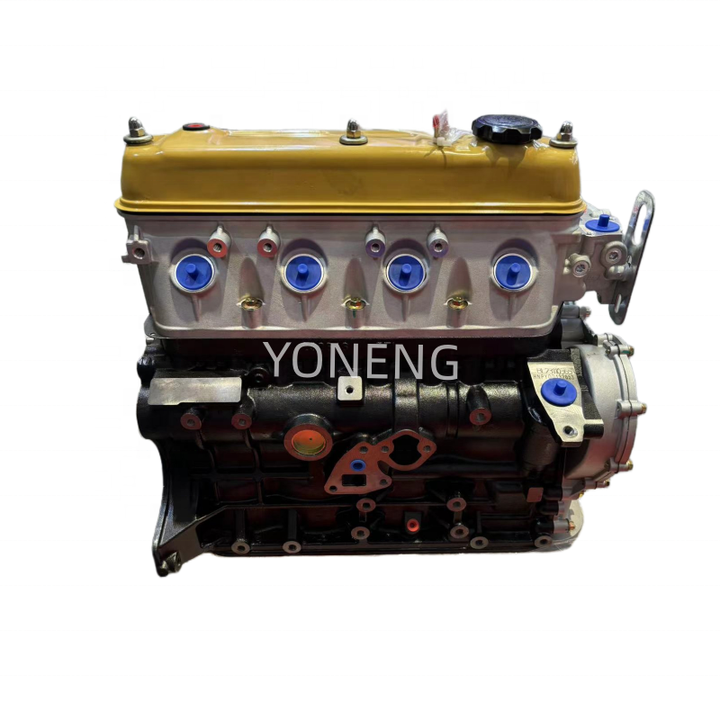Exploring the Benefits of the 4Y Engine for Automotive Enthusiasts
Exploring the Benefits of the 4Y Engine for Automotive Enthusiasts
Blog Article
Exploring the Different Types of Engine: Which One Fits Your Requirements?
Inner combustion engines continue to dominate due to their integrity, while electrical engines are obtaining grip for their sustainability. Crossbreed engines supply a flexible concession, and diesel engines stand out for their power in requiring applications.

Interior Combustion Engines
Interior burning engines (ICEs) are the foundation of contemporary transportation, powering a vast array of cars from vehicles to planes. These engines run on the concept of transforming gas right into power via a series of controlled surges within a combustion chamber. One of the most usual types of ICEs consist of gas engines, diesel engines, and rotating engines, each developed to satisfy specific efficiency and efficiency requirements.
Gas engines commonly make use of stimulate ignition, while diesel motor rely upon compression ignition, leading to distinctive distinctions in gas performance and power output (4y engine). Rotary engines, or Wankel engines, provide a small layout and smooth operation, however are much less commonly utilized in mainstream applications
ICEs have actually undergone considerable developments in technology, consisting of the introduction of turbocharging and gas injection systems, which enhance general efficiency and efficiency. Despite their effectiveness enhancements, ICEs encounter boosting scrutiny due to their environmental effect, specifically relating to greenhouse gas discharges.
Electric Engines
As problems regarding environmental sustainability and fossil fuel reliance grow, electrical engines have become an engaging alternative to internal combustion engines. These engines make use of electrical motors powered by batteries or gas cells, providing a cleaner and a lot more effective motive powers.
Among the main benefits of electrical engines is their minimized emissions. Unlike traditional engines that melt fossil gas, electric engines produce absolutely no tailpipe discharges, considerably lowering air contamination and contributing to improved public wellness. Furthermore, the efficiency of electrical motors commonly surpasses that of inner combustion engines, converting a higher proportion of power from the source of power into usable energy for activity.
Electric engines are additionally remarkable for their silent procedure, making them optimal for metropolitan atmospheres. 4y engine. The simplicity of their style results in less moving components, which can result in lowered maintenance prices and boosted reliability over time
Nevertheless, challenges continue to be, consisting of battery manufacturing influences, charging framework, and array restrictions. Regardless of these hurdles, the growing investment in electrical car innovation and eco-friendly power sources factors towards an encouraging future for electric engines, placed to play an important duty in the transition toward lasting transport.
Hybrid Engines
Blending the advantages of both electrical and traditional inner burning engines, hybrid engines represent a versatile option in the pursuit for efficient and sustainable transportation. These engines integrate a gas or diesel motor with an electrical motor, permitting improved fuel effectiveness and minimized exhausts contrasted to standard vehicles.
Hybrid engines operate in several modes, using the electric motor for low-speed driving and the interior combustion engine for higher speeds or when more power is needed. This dynamic operation not only improves fuel economic situation yet additionally adds to a smoother driving experience. Regenerative stopping is an additional essential attribute, recording power typically shed throughout stopping and rerouting it to charge the battery.

As consumers increasingly focus on eco-friendliness, crossbreed engines stand out as a functional selection, offering a reliable equilibrium of efficiency, efficiency, and environmental obligation. This adaptability makes them appropriate for metropolitan commuting and long-distance traveling alike.
Diesel Engines
Performance and power are trademarks of diesel motor, which have actually long been favored for their toughness and fuel economic situation. These engines operate the principle of compression ignition, where air is compressed to a heat prior to gas is injected, sparking it without the requirement for ignition system. This process enables diesel engines to attain higher thermal performance compared to gas engines, translating into far better fuel gas mileage and lower co2 emissions.
Diesel engines are particularly fit for heavy-duty applications such as trucks, buses, and industrial equipment, where torque and durability are vital. Their layout usually includes stronger elements to stand up to the greater stress generated during operation, leading to longer solution life and lowered upkeep costs.

Alternative Gas Engines
While diesel motor have long dominated the click reference landscape of heavy-duty source of power, different gas engines are obtaining traction as feasible alternatives for a more sustainable future. These engines use a range of fuels, such as compressed all-natural gas (CNG), ethanol, lp, and hydrogen, intending to decrease greenhouse gas emissions and dependence on nonrenewable fuel sources.
One substantial advantage of alternative fuel engines is their potential to reduced carbon impacts. As an example, CNG engines give off less toxins compared to conventional diesel motor, making them appropriate for urban transportation systems and fleets looking for to improve air quality. Ethanol, stemmed from biomass, not only reduces discharges yet likewise sustains agricultural economic situations.
Hydrogen fuel cells stand for an advanced advancement in this world, providing zero-emission power via a chemical reaction between hydrogen and oxygen. Nonetheless, challenges such as facilities growth and production expenses continue to be obstacles to extensive fostering - 4y engine.
Verdict
Interior combustion engines provide reliability, while electric engines focus on sustainability and lowered upkeep. Crossbreed engines integrate the advantages of both, enhancing performance, whereas diesel engines give remarkable power and torque for durable applications.
Hybrid engines offer a versatile concession, and diesel engines stand out for their power in requiring applications. The most typical types of ICEs consist of fuel engines, diesel engines, and rotating engines, each created official source to satisfy certain performance and efficiency demands.
Unlike standard engines that shed fossil fuels, electric engines generate no tailpipe discharges, considerably lowering air contamination and contributing to improved public health and wellness.Crossbreed engines run in several settings, using the electric motor for low-speed driving and the browse around this web-site internal burning engine for greater speeds or when more power is needed. Hybrid engines incorporate the advantages of both, enhancing effectiveness, whereas diesel engines supply exceptional power and torque for heavy-duty applications.
Report this page